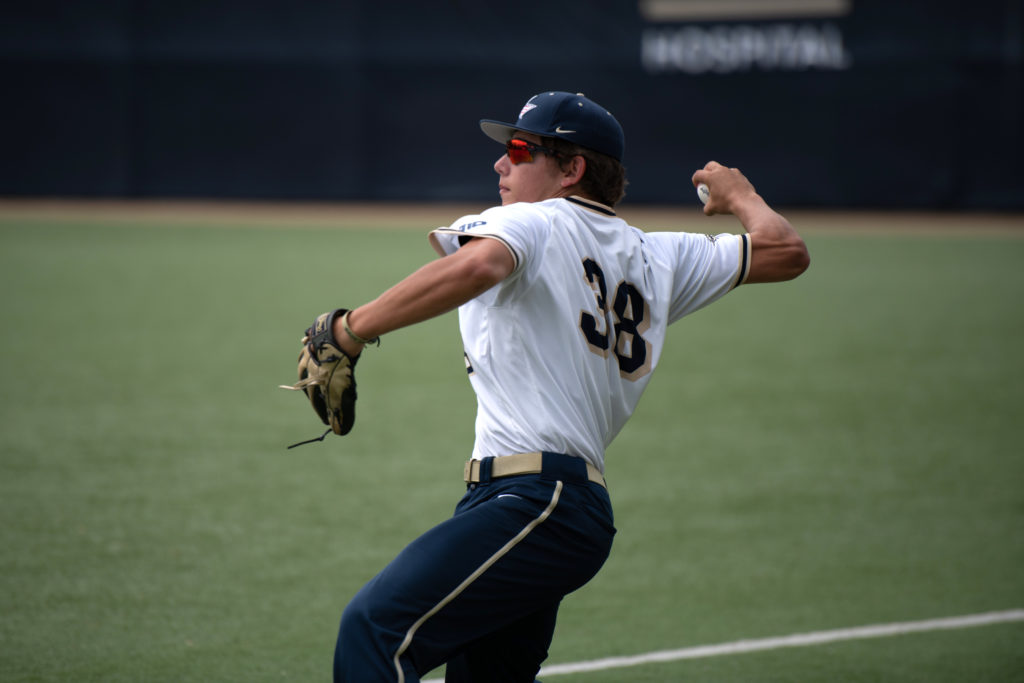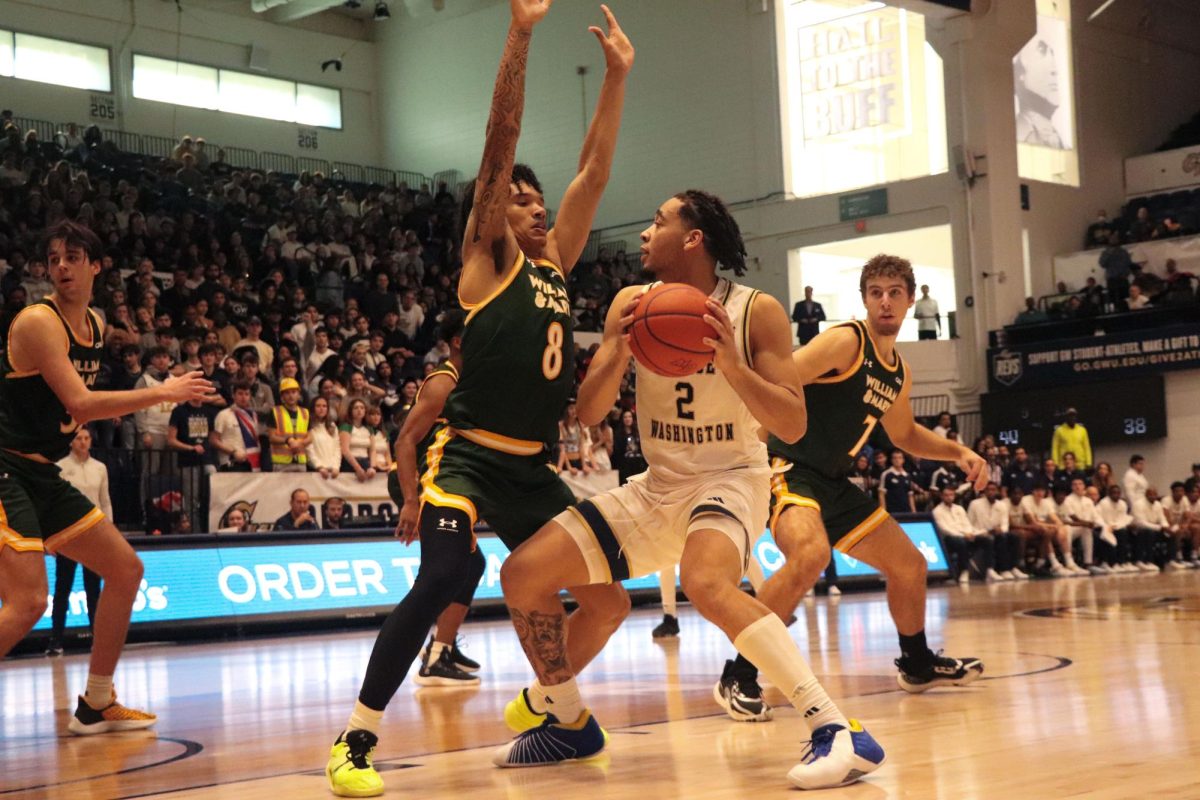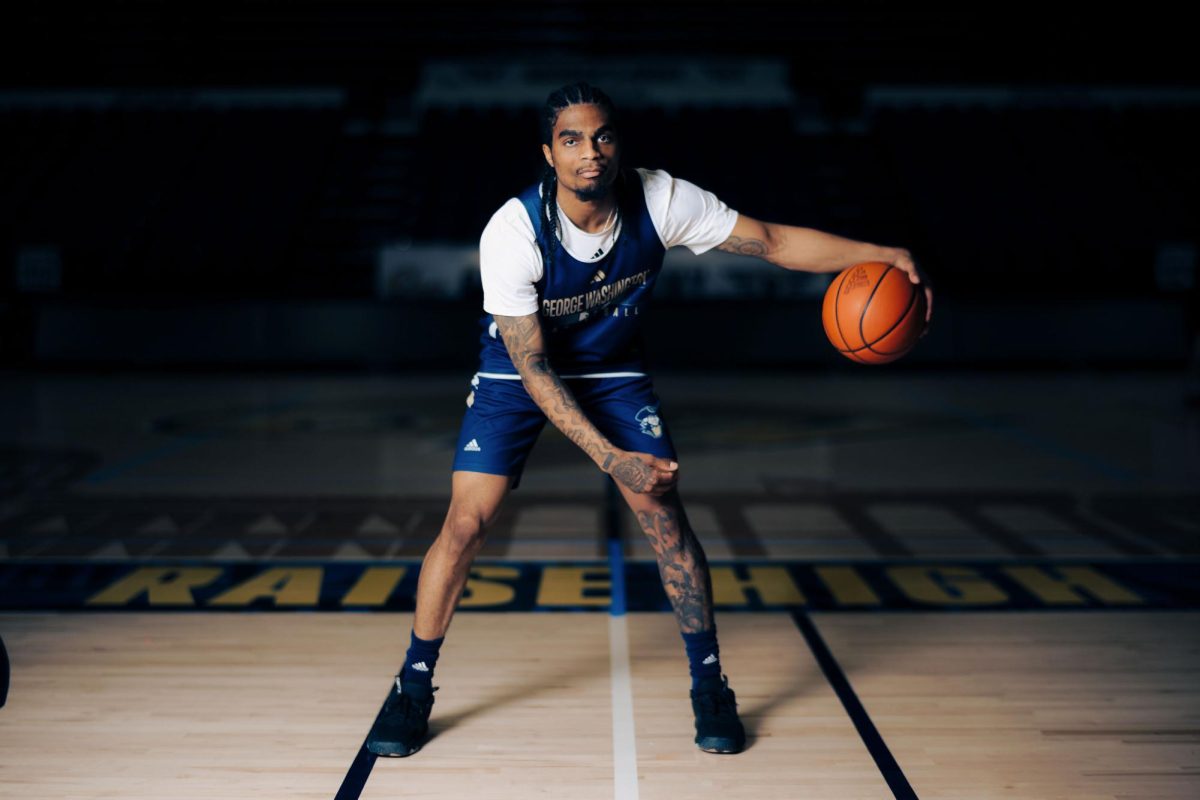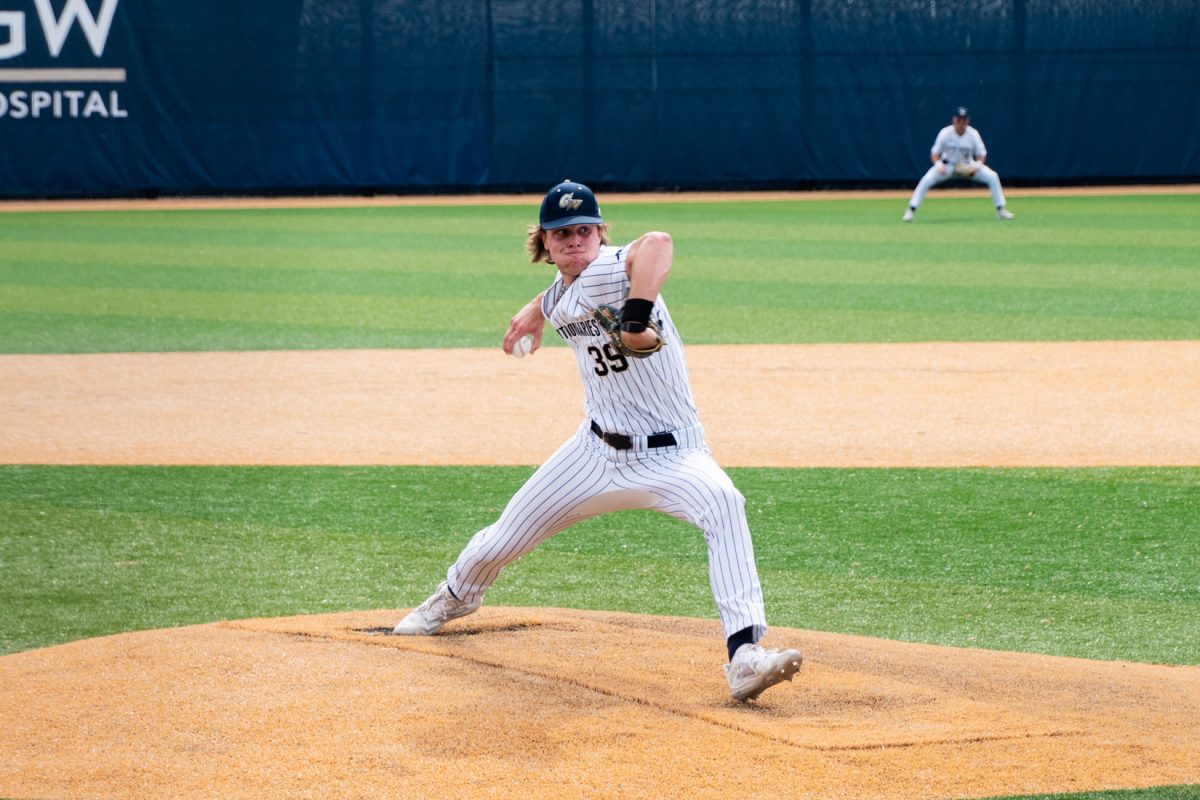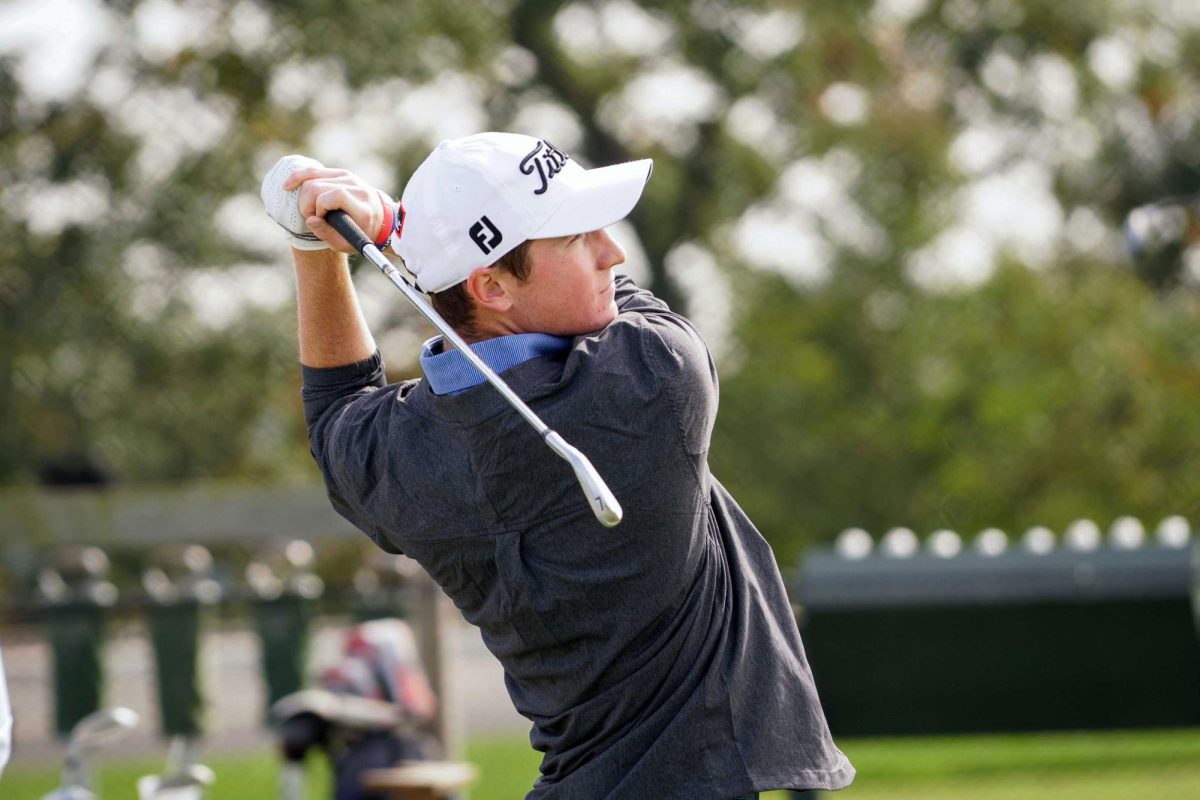Baseball season doesn’t officially start until February, but Tucker Field isn’t sleeping during the offseason.
Beginning in October, baseball practices 20 hours a week, per NCAA practice rules, taking full advantage of the fall to hone skills and help freshmen acclimate to collegiate and GW play. Players and coaches said the practices allow for the team to sure up its fundamentals before it officially takes on teams in the spring.
Head coach Gregg Ritchie said the daily practices range from 11:45 a.m. to 2 p.m., a tight time frame that forces players to squeeze in drills. He operates from a printed schedule, with drills on defense and base-running – skills Ritchie called “overlooked” – that are planned by the hour.
“Offensive work is generally last, it’s the cherry on top, it’s the little piece of candy,” Ritchie said. “We have to be very careful not to give the hitting first on a daily basis because everyone likes hitting.”
Ritchie said he usually splits the squad into four different groups and bounces between them, overseeing drills and activities.
One of the team’s tried-and-true drills is called “27 outs.” The drill requires the entire team to earn 27 consecutive outs, with Ritchie calling out various scenarios like “play at first” or “second and third, no outs.” Pitchers take turns on the mound, an assistant coach hits and the position players are required to make snap defensive decisions.
When the players finally get the 27th out, they react like someone hit a walk-off homer in extra innings. The team cheers wildly and dog piles in the infield.
During one practice, it took the players 23 minutes of balls in play to record the 27 outs.
Pitching coach Rick Oliveri said the drill has been a staple of GW baseball since he joined the program three years ago. He added that the skill prepares players for the high-stress environment of a real game.
“It really simulates important moments in the game,” Oliveri said. “If we’re up by a run in the ninth inning, and a player has to field a ball with two outs and he feels the pressure of the situation, well he felt that in practice.”
Oliveri said the fall practices aren’t just for the players. He said the coaches use the time to track how players are improving and what areas they need to focus on before the season begins.
“Every day after practice, we meet as a coaching staff and debrief,” Oliveri said. “We talk about the day, positives, challenges that we faced, strides guys are making, if guys are going backward in some areas, where guys can ask for help.”
Freshman outfielder Stephen Ditomaso said the “27 outs” drill is one of his favorites because it made him feel more connected with his new teammates. If one player bobbles a ball and fails to record the out, the count resets and the team has to start the drill over again, Ditomaso said.
“It makes us come together and we have to do this for each other,” Ditomaso said. “Everyone is accountable for everyone else, so you have to make the play so that every single other person on the field will make the play for you.”
He said as a freshman, he would be nervous for his first collegiate baseball game if the team started practicing in the spring. The fall practice time allows the team to bond and the freshmen to get a taste of college baseball, he said.
Baseball added 10 freshmen and three junior college transfers to the ranks this season.
“Everyone varies, but it definitely helps with how prepared you’re going to be, and it definitely helps you feel like you belong when you’re working in the fall with everyone,” Ditomaso said.


